Julian Assange was born in Australia three days after the U.S. Supreme Court ruled in 1971 that the U.S. government couldn’t stop the publication of the Pentagon Papers – the top secret history showing American presidents had lied about the Vietnam war.
The decision New York Times v. U.S. was one of the great press victories of the 20th century. The court ruled the government can’t stop publication of national security secrets unless they “surely result in direct, immediate, and irreparable harm to our Nation, or its people.”
In this 21st century world, Assange, stands, bizarrely, in the shoes of Arthur Sulzberger, the publisher of the Times. Assange, who calls himself “editor-in-chief” publishes WikiLeaks, which has disclosed two of the most newsworthy caches of leaked documents in the past decade.
First, in 2010, Assange made himself the darling of many liberals by publishing the video “Collateral Murder” showing Apache helicopters pilots killing two journalist working for Reuters after the Apache crew mistook a camera lens for a rocket propelled grenade. WikiLeaks followed up with “Cablegate,” the publication of some of the 250,000 classified U.S. diplomatic cables obtained by WikiLeaks. Then Secretary of State Hillary Clinton and other officials thought the disclosure threatened U.S. interests.
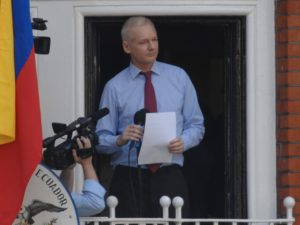
This past October Assange – holed up in Ecuador’s London embassy to avoid prosecution – made himself the darling of many conservatives by publishing emails hacked from the Democratic National Committee and from Hillary Clinton’s campaign. U.S. intelligence officials say Russian intelligence hacked the documents with the approval of top echelons of Russian government. The operation may have been a plan to sow confusion in the presidential election or even help Donald Trump win.
But is Assange actually a publisher or editor or even a journalist? Assange is a computer hacker by trade who spent much of the 1980s hacking top-secret documents in a series of U.S. military agencies.
The question of whether Assange is a journalist points to the enormous change in the press that has occurred with the advent of high speed communications and the ability to acquire and publish large caches of documents.
Ask Daniel Ellsberg, the leaker of the Pentagon Papers, and James C. Goodale, the New York Times lawyer who defended the publication of the papers, and they insist that Assange is functionally a publisher who deserves the same protections as Sulzberger.
But noted First Amendment lawyer Floyd Abrams, who also defended the Times, says Assange’s avowed goal of harming the United States and his careless disclosure of diplomatic secrets put him in a category separate from Sulzberger.
Abrams told the Los Angeles Times that Cablegate involved the release of “so much information that could do harm to national security that I think they shouldn’t be viewed as heroic but as, often, reckless.”
The Senate weighed in against Assange. When it considered a shield law to enable reporters to protect confidential sources in federal court, it defined journalist in a way that excluded Assange.
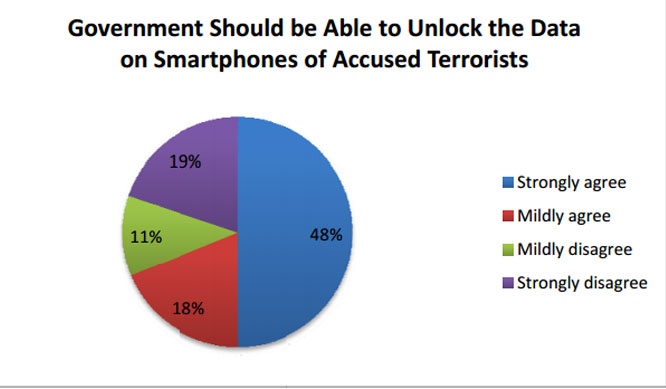
Pentagon Papers – piercing presidential ‘infallibility’
Ellsberg worked as a defense analyst at the Rand Corporation in the early 1960s before going to work for Defense Secretary Robert McNamara. He later spent two years in Vietnam for the State Department. Back at Rand he contributed to a study of secret documents about the Vietnam War, later known as the Pentagon Papers.
Disaffected by the war and what he found in the secret papers, Ellsberg tried to persuade Sens. J. William Fulbright and George McGovern to release the papers on the Senate floor. They would have enjoyed immunity from prosecution for their floor statements. But the senators did not act. Ellsberg eventually leaked the papers to Neil Sheehan, a reporter for the Times who began writing stories first published June 13, 1971.
The papers primarily made Presidents Lyndon Johnson and John F. Kennedy look bad. They showed that Johnson knew early in the war that it was not winnable and had systematically lied to the public and to Congress.
Nixon at first thought the leaked documents just made the Democrats look bad, but Secretary of State Henry Kissinger and others convinced him the papers also would damage Nixon. J.R. Haldeman, his chief of staff, put it this way in a meeting with Nixon.
“To the ordinary guy, all this is a bunch of gobbledygook. But out of the gobbledygook comes a very clear thing…. You can’t trust the government; you can’t believe what they say; and you can’t rely on their judgment; and the — the implicit infallibility of presidents, which has been an accepted thing in America, is badly hurt by this, because it shows that people do things the president wants to do even though it’s wrong, and the president can be wrong.”
Attorney General John N. Mitchell told the Times it was violating the 1917 Espionage Act by providing secrets to the enemy and demanded it stop publication. When it refused, the administration obtained a court injunction stopping publication.
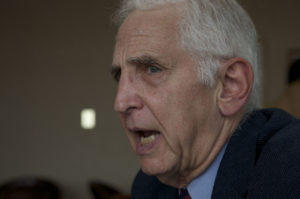 Ellsberg began leaking papers to other news organizations, first the Washington Post and then the St. Louis Post-Dispatch and Boston Globe. Richard Dudman, former Post-Dispatch chief Washington correspondent recalled being told to send a reporter to a phone booth in Cambridge where the reporter was directed to another phone booth and then to a porch of a home near Harvard University where documents were under a stack of old newspapers.
Ellsberg began leaking papers to other news organizations, first the Washington Post and then the St. Louis Post-Dispatch and Boston Globe. Richard Dudman, former Post-Dispatch chief Washington correspondent recalled being told to send a reporter to a phone booth in Cambridge where the reporter was directed to another phone booth and then to a porch of a home near Harvard University where documents were under a stack of old newspapers.
Courts also ordered other newspapers not to publish.
Goodale, the noted media defense lawyer, recalls when the Times contacted Herbert Brownell Jr., the former Eisenhower attorney general said there was no defending publication of the papers. Publication clearly violated the Espionage Act. But the Times did defend with the help of Yale Law professor Alexander Bickel.
In a secret brief filed with the Supreme Court in New York Times v. U.S., the administration claimed that the papers contained 11 drop-dead secrets that would endanger national security. Among the secrets were:
- Diplomatic attempts to end the war through negotiations with the North Vietnamese, disclosure of which could derail peace negotiations and delay peace.
- Comments offensive to U.S. allies in the war, particularly South Korea, Thailand, and Australia.
- The names and activities of CIA agents “still active in Southeast Asia” as well as references to the activities of the National Security Agency.
- Contingency plans of the Southeast Asia Treaty Organization (SEATO).
- U.S. estimates on how the Soviet Union would react to the Vietnam War.
- The judgment of a U.S. intelligence board on the Soviet capability to supply weapons to the North, the disclosure of which could lead to “serious consequences.”
- The U.S. consideration of a nuclear response against China if the Chinese attacked Thailand.
- A 1968 cable to Washington by then-ambassador Llewellyn C. Thompson making predictions on a likely Soviet response to mining Haiphong harbor or possibly invading North Vietnam, Laos, or Cambodia.
- Discussions of possible South Vietnamese military action in Laos.
- The successes that the United States had in communications intelligence, revealing U.S. capabilities to the enemy.
- Confidential diplomatic communications that would endanger the lives of prisoners of war. “The longer prisoners are held, the more will die,” the government said.
These eleven secrets considered to be the most dangerous items within the Pentagon Papers volumes involve sensitive subjects in which the government has a strong interest – diplomatic initiatives, intelligence activities, intelligence estimates and capabilities, and military contingency plans. The government claimed that disclosure could endanger the lives of intelligence agents and prolong the war, with the resulting death of thousands more soldiers and many prisoners of war.
The Supreme Court expedited oral arguments in a record time, issuing opinions before the end of the month. At the argument, Bickel was asked whether he would argue the press could publish the location of a U.S. troop ship during a time of war. He said no, but went on to argue that the government could not stop the presses – impose a prior restraint on publication – except under extraordinary circumstances such as those.
Prior restraint
The Supreme Court agreed with Bickel relying on the doctrine of prior restraint. The First Amendment is at its strongest when it comes to protecting the press’s right to publish information without governmental interference. In other words, the government cannot stop the presses except in narrow, limited circumstances. But it can punish the news organization after publication.
The reason this doctrine of prior restraint is so robust is that it was the clear understanding of Anglo-American law when the First Amendment was written. William Blackstone, in his Commentaries written just before the American Revolution, said, “The liberty of the press is indeed essential to the nature of a free state; but this consists in laying no previous restraints upon publications, and not in freedom from censure for criminal matter when published.”
The consideration of the Pentagon Papers case was so fast that there was no single opinion for the court. Justices wrote separately.
Justice Potter Stewart’s decision was the court’s bottom line. He wrote the government cannot impose a prior restraint absent proof of “direct, immediate, and irreparable damage” to national security.” Justice Byron White cautioned, though, he would have “no difficulty in sustaining convictions” for Espionage against the newspaper after publication.
The Nixon administration did not pursue a criminal Espionage prosecutions against the papers, but the warning from White and Stewart remains, leaving the threat that reporters or news organizations could be prosecuted in the future.
Ellsberg was charged with Espionage, but a judge threw out the prosecution because of a Watergate related disclosure – the White House had authorized an illegal break in of Ellsberg’s psychiatrist’s office in Beverly Hills to obtain information to discredit Ellsberg.
Even though the Pentagon Papers case meant that a prior restraint almost never could be imposed, U.S. v. The Progressive in 1979 was the exception. A federal judge stopped publication of a piece purporting to give the secret of the Hydrogen bomb. The controversy never made it to the Supreme Court because the government dropped its case after Scientific American published stories on the H-bomb in which the magazine published much of the same information.
Lip-syncing to Lady Gaga
The Pentagon Papers decision looks quaint in comparison to some of the new twists caused by 21st century changes in information technology.
The government now has vast technological ability to sweep up huge amounts of telephone, email and other communications data. As President Obama put it in a speech in early 2014 reacting to the NSA data collection controversy: “America’s capabilities are unique,” Mr. Obama said. “And the power of new technologies means that there are fewer and fewer technical constraints on what we can do. That places a special obligation on us to ask tough questions about what we should do.”
But just as there is greater technological capability on the government side, so too is there on the leaker’s side. Court-martialed PFC Bradley Manning used a tiny memory stick to download hundreds of thousands of secret State Department cables.
A blog entry of Manning’s published in the Guardian gave this account of how easy it was: “I would come in with music on a CD-RW labelled with something like ‘Lady Gaga’ … erase the music … then write a compressed split file. No one suspected a thing … [I] listened and lip-synced to Lady Gaga’s Telephone while exfiltrating possibly the largest data spillage in American history.”
Manning sent the documents to Assange at WikiLeaks.
Assange had taken to hacking in the late 1980s under the handle “Mendax.” He formed the hacking consortium, International Subversives, along with two other hackers – “Trax” and “Prime Suspect.” Assange hacked the Pentagon, Navy, NASA, Lockheed Martin and Stanford University’s SRI International, according to various histories.
By the time Manning contacted him, Assange had set up WikiLeaks as a world-wide online repository of leaked documents with the goal of greater “transparency.” But WikiLeaks quickly became what one alienated former Assange colleague called “a one-dimensional confrontation with the USA.”
Journalists described Assange’s carelessness with disclosing the names of Afghans who worked with the U.S. He told reporters, “Well, they’re informants. So, if they get killed they’ve got it coming to them. They deserve it.”
After the Paris terror attacks, WikiLeaks blamed the U.S. “At least 39 dead tonight in Paris terror attacks. 250k dead in Syria & Iraq. Both a direct result of US, UK, France feeding Sunni extremists.”
Assange also didn’t conceal his animus toward Hillary Clinton. He wrote in February 2016, “I have had years of experience in dealing with Hillary Clinton and have read thousands of her cables. Hillary lacks judgement and will push the United States into endless, stupid wars which spread terrorism. Her personality combined with her poor policy decisions have directly contributed to the rise of ISIS. She’s a war hawk with bad judgement who gets an unseemly emotional rush out of killing people.”
Assange’s motivations are far different from Daniel Ellsberg’s, who made clear his leaks were intended to make a better America.
They also are relevant to a criminal prosecution. For prosecutors to win the first Espionage Act prosecution against a journalist, they would have to prove intent to harm the United States. Assange’s statements could prove intent.
Meanwhile, Manning, now Chelsea, is serving an Espionage sentence.
Snowden and the NSA
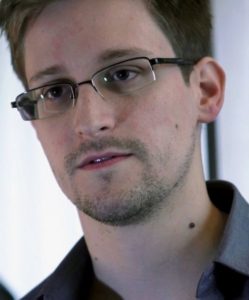
Edward Snowden’s leak of NSA secrets is another example of modern technology used to make off with enormous troves of secrets. Snowden, a government contractor, was able to capture those secrets on laptops he took to Hong Kong and then Russia.
Snowden clearly violated his security clearance and it would seem the law. He leaked secrets about the NSA’s massive data collection, its snooping on German Chancellor Angela Merkel and the UN Secretary General Ban Ki-moon and its MUSCULAR program sweeping up hundreds of millions of Google and Yahoo email files on their way from the public Internet to the cloud overseas.
He also leaked the documents in a way that undercut U.S. interests abroad, seemingly orchestrated to damage U.S. relations with other countries at key diplomatic moments. And then he sought refuge from the two main countries that regularly spy on America – to say nothing of spying on their own citizens.
But the disclosure of the immense scope of the data collection and spying served the public interest. The scope surprised even those who generally support the programs. Just trying to keep track of the codenames is mind-boggling: MUSCULAR, PRISM, DISHFIRE, TRACFIN, POLARBREEZE SNACKS, GHOSTHUNTER.
The disclosures have sparked a legitimate and important discussion of whether post Sept. 11 surveillance has run amok. Even the man who is supposed to be in charge, the president, says he did not know about some of the activities and wants to reconsider the extent of the national security spying that his administration has undertaken.
Glenn Greenwald, the former Guardian reporter who revealed Snowden’s secrets, was not a traditional journalist like Neil Sheehan, the Times’ reporter on the Pentagon Papers. He is an advocacy reporter who insisted it was clear the NSA program was illegal – which was not certain in that all three branches of government had approved it.
But Greenwald was a journalist – a Pulitzer-prize winning one because of the Snowden disclosures – not a hacker like Assange.
‘Blow off their front porches’
The Supreme Court clarified in 2001 that the First Amendment protects journalists who print secrets that sources obtained illegally. The decision was in a case that did not involve national security secrets, Bartnicki v. Vopper.
Frederick W. Vopper was a broadcast journalist who received a tape of a teachers union leader saying the union might have to “blow off their front porches” to force school board members to agree to a contract. Someone illegally taped the conversation in violation of federal wiretapping law and put the recording in the mail box of the leader of a citizens group, who gave it to Vopper. Vopper broadcast the tape.
The court concluded that a reporter could publish the information he obtained legally even if one source along the chain of custody obtained the information illegally in the wiretap.
Citing the Pentagon Papers case, Justice John Paul Stevens said that the press could publish the tape because Vopper had not been involved in the illegal acquisition of the conversation and because it was a matter of public concern. Justice Stevens wrote that “a stranger’s illegal conduct does not suffice to remove the First Amendment shield from speech about a matter of public concern.”
The word stranger is important. A reporter could be in legal jeopardy if he or she contacted a known source to obtain a particular top secret document
Government cries wolf
One common characteristic of leaks of government secrets is government claims of damage to national security almost always are greatly exaggerated.
The eleven drop-dead secrets, considered to be the most dangerous items within the Pentagon Papers volumes, involved sensitive subjects in which the government has a strong interest.
But the verdict of history is the disclosure of the papers was in the public interest and did not harm national security. Solicitor General Erwin Griswold, author of the secret brief, himself later wrote: “I have never seen any trace of a threat to the national security from the publication.”
Just before the winter holidays in 2005. President George W. Bush made a strong plea to the New York Times not to publicize another NSA operation intercepting the content of some Americans’ calls without a warrant. Bush warned New York Times editors on December 5, 2005, that they would have “blood on their hands” if they published the NSA story. He meant that the publication could enable terrorists to launch another attack and that it would be the newspaper’s fault.
Happily, that prediction has not come true.
The Obama administration claimed at the time of the Snowden’s NSA revelations that the data it had collected had helped avert 54 terrorist threats in 20 countries. Obama said “lives have been saved” by the NSA program.
But the NSA acknowledged to Congress that not all of the 54 incidents were terrorist plots and that only 13 related to the United Sates. There were hard details on only a handful of the cases, none of which involved planned attacks on U.S. targets. Obama’s commission that studied NSA practices concluded information from the metadata collection was “not essential to preventing attacks.”
Historically, the press has refused to publish information about breaking codes, CIA agents’ identities, troop movements or other military plans that could risk American lives. The widely reported New York Times decision not to disclose details of the Bay of Pigs invasion or the American discovery of missiles in Cuba during the Cuban missile crisis are two examples of press discretion.
Press as a check
Forty-five years after the Pentagon Papers the press has become an important check on presidential power in the nuclear age in a way that the Founding Fathers could not have imagined.
Justice Stewart’s opinion in the Pentagon Papers foresaw that development. He wrote: “In the governmental structure created by our Constitution, the Executive is endowed with enormous power in the two related areas of national defense and international relations. This power, largely unchecked by the Legislative and Judicial branches, has been pressed to the very hilt since the advent of the nuclear missile age. For better or for worse, the simple fact is that a President of the United States possesses vastly greater constitutional independence in these two vital areas of power than does, say, a prime minister of a country with a parliamentary form of government.
“In the absence of the governmental checks and balances present in other areas of our national life, the only effective restraint upon executive policy and power in the areas of national defense and international affairs may lie in an enlightened citizenry – in an informed and critical public opinion which alone can here protect the values of democratic government. For this reason, it is perhaps here that a press that is alert, aware, and free most vitally serves the basic purpose of the First Amendment. For without an informed and free press there cannot be an enlightened people.”
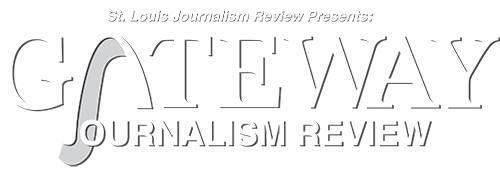
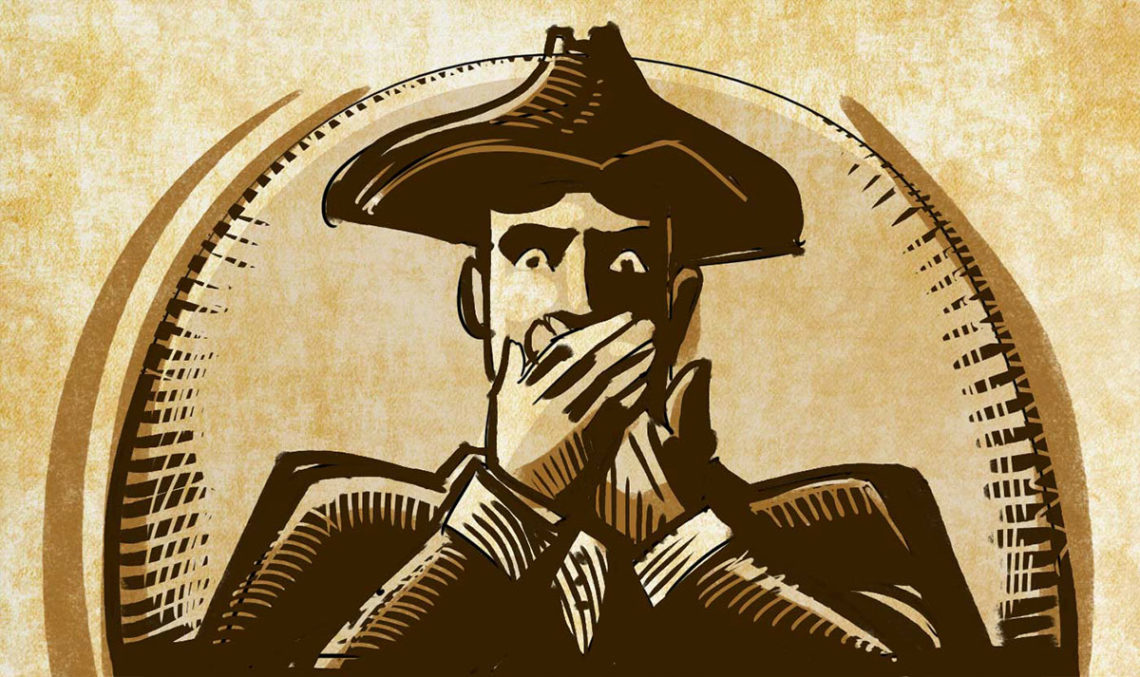
No Comments